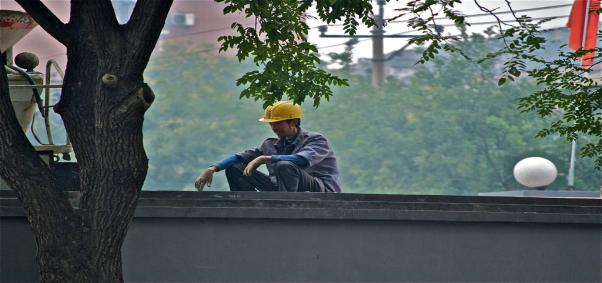
This article was published in USA Today on September 16, 2014.
Felipe Calderón is the former President of Mexico and the chair of the Global Commission on the Economy and Climate.
In recent years the scientific evidence about man-made climate change has strengthened. Yet the economic challenges that the world has faced in these same years have prevented governments from taking concrete action to reduce climate risk. This has happened because economic decision-makers have widely believed that acting to tackle climate change implies major economic sacrifice.
At the same time, the economic crisis and disappointing growth have pushed many countries to seek new ways to stimulate better economic performance. But in the midst of this pessimistic picture, there is good news: we can now have better economic growth and tackle climate change at the same time.
For years we've heard that fighting climate change will hurt economic growth. But new analysis finds this is simply not true. In fact, reducing greenhouse gas emissions requires action in the very same areas that throughout history have driven economic growth: investment in efficiency, infrastructure and innovation. Well-managed policy and business investment in these fields can create growth and reduce the risks of dangerous climate change at the same time.
This is the conclusion of a major new report from the Global Commission on the Economy and Climate, which I have chaired alongside Lord
After a year of rigorous analysis, informed by leading thinkers and practitioners across the world, we found the evidence is overwhelming. Action on climate change need not damage growth; it can actually improve it.
Our report, "Better Growth, Better Climate," finds:
- It's not what we spend, it's how. Over the next 15 years the world is likely to invest around $90 trillion in new infrastructure, in cities, land use and energy systems. How we spend this money will determine whether we will continue on the current dangerous path of unchecked climate change, or if we can successfully shift to a high-growth, low-carbon economy. Since we are going to spend this money, we should make sure we do it well.
- Climate action is smart and affordable. Of the $6 trillion we will spend a year on infrastructure, only a small further amount — around $270 billion per year — is needed to accelerate the shift to a low-carbon economy, through clean energy, public transport systems and smarter land use. And this additional investment could be entirely offset by operating savings, particularly through reduced fuel expenditures.
- New technologies are transforming business opportunities for low-carbon growth. In fields such as clean energy, transport, digitization and materials science, innovation is simultaneously increasing productivity and cutting carbon emissions. Many Fortune 500 companies and leading investors are now moving rapidly into these fields.
This new agenda of driving growth and emissions reduction together requires smarter investments and policies in three foundations of modern life: cities, land use (both agriculture and forests), and energy.
Cities are where the global economy world is growing fastest. How we manage urban development will define both our economic and our climate future. It is now clear that compact, efficiently designed cities based on mass public transport are economically more productive, cost less to build and have lower emissions, while also bringing less congestion and much lower air pollution.
Similar multiple benefits can now be achieved in the ways we manage food, land use and deforestation. New technologies and smarter practices can drive stronger productivity, while restoring degraded land and cutting waste can produce more food with less environmental degradation.
And the clean energy revolution is already here. The rapidly falling costs of wind and solar power are making renewable energy increasingly competitive with coal and gas, even without subsidy. This is happening from China and Brazil to the plains of Texas. As the costs of coal dependence – in air pollution and energy insecurity – have become increasingly apparent, it is now likely that over the next 15 years half of all new electricity around the world could be generated by clean sources.
These structural and technological changes create huge opportunities for countries to develop on a different, lower-carbon pathway. Public policies that send the right market signals can result in more efficient economies with better infrastructure and greater innovation — and also fewer emissions.
Business and governments are already coming together on this. Forty countries and more than 20 regions already put a price on carbon, perhaps the single most important policy signal to markets that carbon pollution imposes a steep cost to society — and that the polluter should pay. More than 4,000 global companies report their greenhouse emissions, providing an industry-built foundation to go farther.
As the former president of Mexico, I've seen first-hand that if business and government work together, we can achieve the goals our report lays out. We can generate growth, stabilize our climate, let business flourish, and improve life for the poor.
But we have to act now. The costs of climate change are undeniable, with multiple lines of evidence of a warming world — from the melting of Arctic sea ice to torrential rain events and severe droughts. And the investment choices we make now are critical. They will lock in continuing weak economic performance and dangerous climate change. Or they will lay the foundation for better growth and a better climate.
This is a critical moment. Let's make the smart choice.






